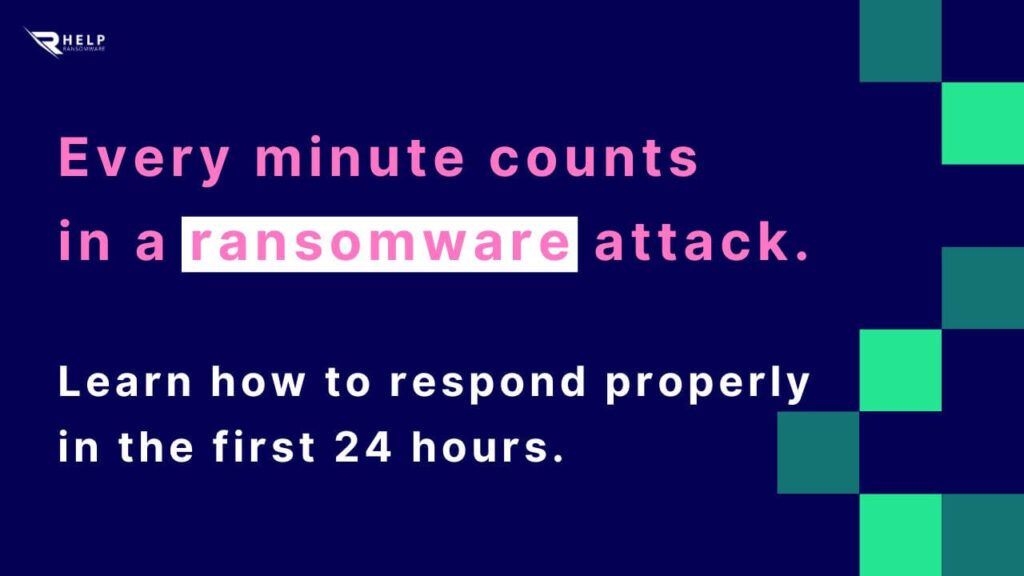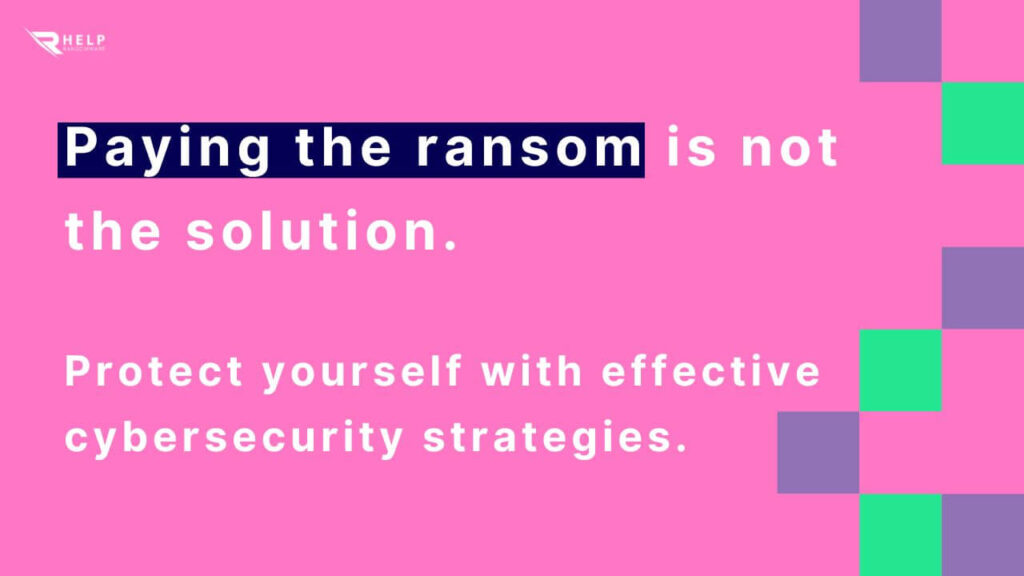Ransomware in your company can cripple a business in minutes . This type of attack encrypts files on infected systems , demanding a ransom to restore access.

Fast & Guaranteed Recovery
HelpRansomware provides a 100% guaranteed ransomware removal and data recovery service, with 24/7 worldwide assistance.
According to the IBM Security X-Force report, ransomware accounted for 21% of cyberattacks in 2023 , making it one of the most serious threats to businesses of all sizes.
Acting quickly within the first 24 hours can mean the difference between recovering data and suffering irreversible losses . In this guide, we’ll explain the key steps affected businesses should take to minimize the damage and avoid mistakes that could make the situation worse.
Speed and coordination in the response are essential to contain the attack and mitigate its effects , preventing it from spreading to other devices within the corporate network .

What to do in the first few hours after a ransomware attack?
When a company falls victim to ransomware , the first few hours are critical . A quick and well-coordinated response can help contain the attack and prevent the malware from spreading to other devices and servers within the organization.
During this period, many businesses panic and make hasty decisions , which can make the situation worse . Some pay the ransom without evaluating other alternatives , while others attempt to remove the malware without properly isolating infected devices , which can cause the ransomware to spread further .
For this reason, it is essential to follow a structured response plan that ensures effective containment of the incident .
1. Disconnect infected devices
As soon as a ransomware attack, it is essential to disconnect the affected devices from the network to prevent the spread.
Ransomware typically spreads rapidly within a corporate network , affecting servers, workstations, and connected devices . If not immediately taken offline, the infection can even reach backup systems , making data impossible to recover without outside intervention.
To protect digital infrastructure, companies must have advanced strategies like those offered by data encryption, ensuring the integrity of information and mitigating attacks.
2. Identify the type of ransomware
It’s critical to identify the specific ransomware variant to determine if a decryption tool is available . Tools like ID Ransomware allow you to upload encrypted files and analyze what type of ransomware has infected your system.
Each ransomware operates differently. Some use weak encryption that can be reversed with specialized tools, while others, like Ryuk or Conti , employ advanced algorithms that make recovery nearly impossible without a legitimate decryption key.
Companies seeking to protect their information must implement measures such as protecting business data , reducing exposure to future attacks.
3. Not paying the ransom
While paying the ransom may seem like a quick fix , 92% of companies that pay are still attacked afterward , according to a Cybereason report .
Furthermore, there’s no guarantee that attackers will actually unlock the files after payment. Paying cybercriminals not only funds their future criminal operations , but also sends a message of vulnerability , making the company a recurring target .
To avoid falling prey to this type of extortion, businesses should turn to reliable solutions such as encrypted file recovery , allowing them to securely restore their information.

Key actions in the first 24 hours
4. Contact the internal security team or external providers
If your company has an IT security team , they should be informed immediately to coordinate an effective response .
If you don’t have an in-house team, it’s advisable to contact data recovery experts like HelpRansomware .
Furthermore, for an effective risk mitigation strategy, it is key to have advanced protocols such as those for enterprise IT security , avoiding vulnerabilities in systems.
5. Inform the authorities
Depending on the region, companies may be legally required to report cybersecurity incidents. In the European Union , the General Data Protection Regulation (GDPR) requires companies to report security incidents involving personal data within 72 hours .
Cyber authorities can provide guidance on next steps and, in some cases, assist with investigations to track down attackers.
Conclusion
Responding appropriately to a ransomware attack within the first 24 hours is key to mitigating the impact and protecting business continuity . Prevention and preparation are essential to addressing future threats.
If your business has been attacked, HelpRansomware can help you recover your data and strengthen your cybersecurity strategy . 🚀📌 More information about our services: Contact.

Immediate Ransomware Help
Don’t let ransomware hold your business hostage. Our experts are ready to recover your data and secure your systems.



